Certain characteristics make a pig what it is and the Idaho Pasture Pigs (IPP) are no exception. The Idaho Pasture Pig Registry is dedicated to promoting this breed to its full potential and the breed standard is an important part.
The Idaho Pasture Pig (IPP) is a medium sized breed of pig that began being developed in 2006 with ongoing selection to breed to the stated ideal standards. The Idaho Pasture Pigs are exceptionally friendly, have a calm disposition, and have been bred to graze instead of root.
Disposition:
Friendly and curious disposition. Aggressive behavior definitely disqualifies a pig from breed selection. A natural maternal instinct to protect the piglets is desired.
Size:
A medium sized pig with sows maturing to 250-350 pounds and boars maturing to 350-450 pounds plus or minus a few pounds. Sows greater than 400 pounds and boars greater than 500 pounds could be disqualified.
Color:
Colors noted upon birth can be black/white, ginger/black, brown/white, cream, ginger, ginger/cream, tri-colored , or solid black. Colors may fade slightly with age. The pattern of the pig’s coat will vary.
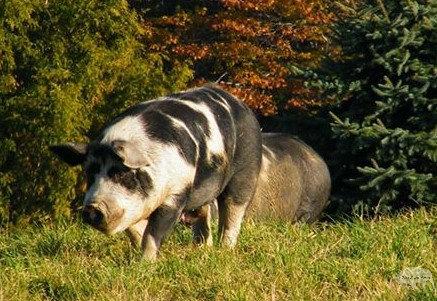
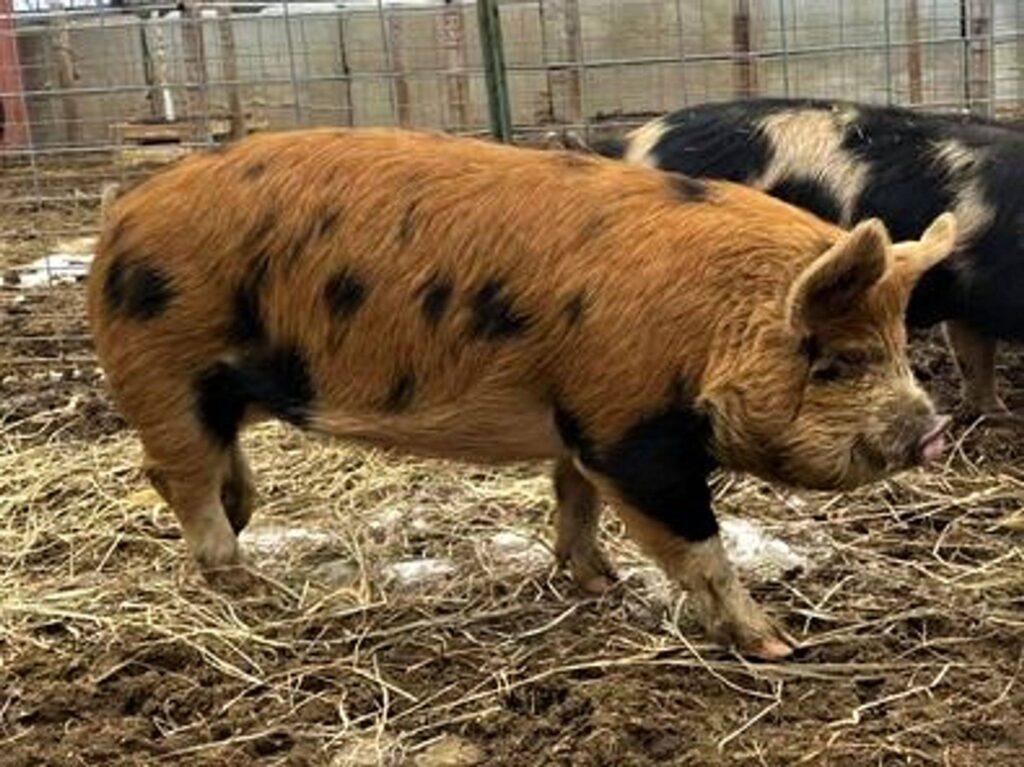
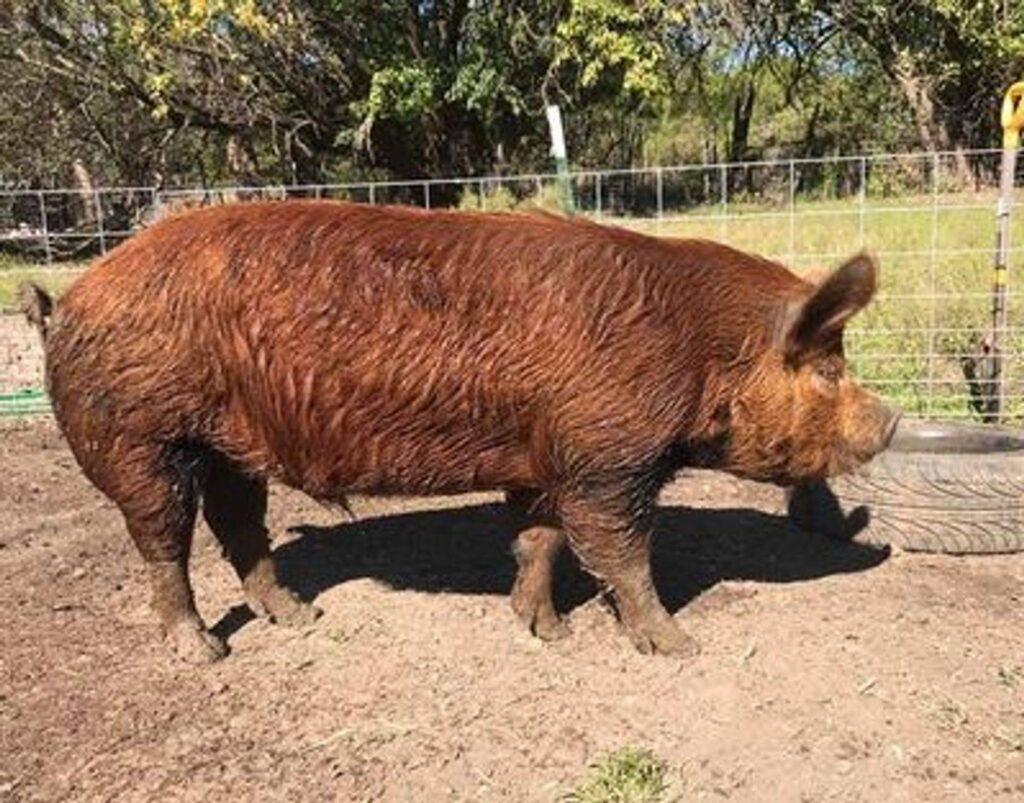
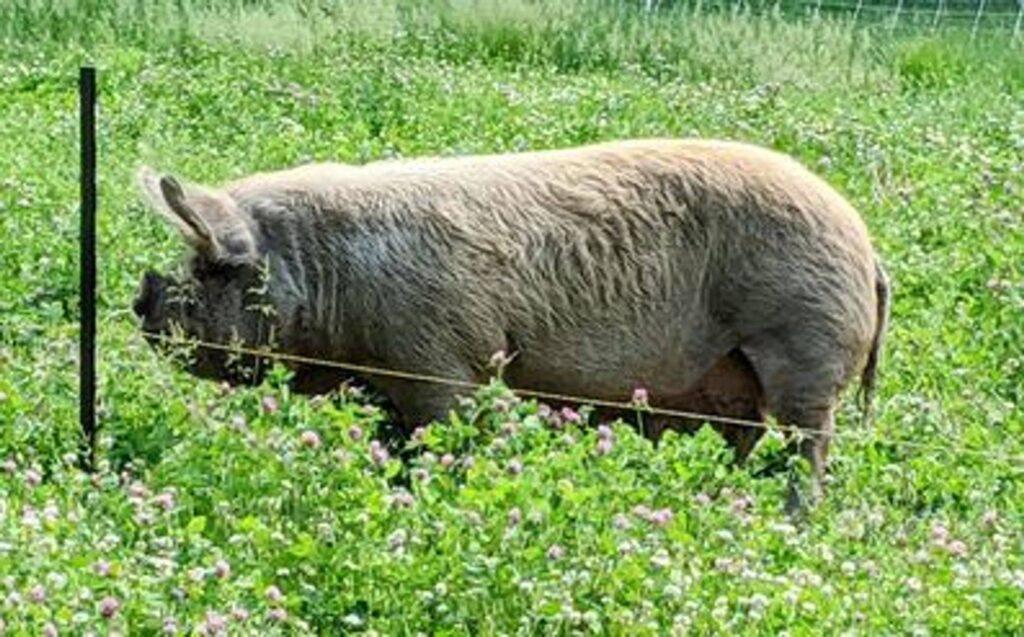
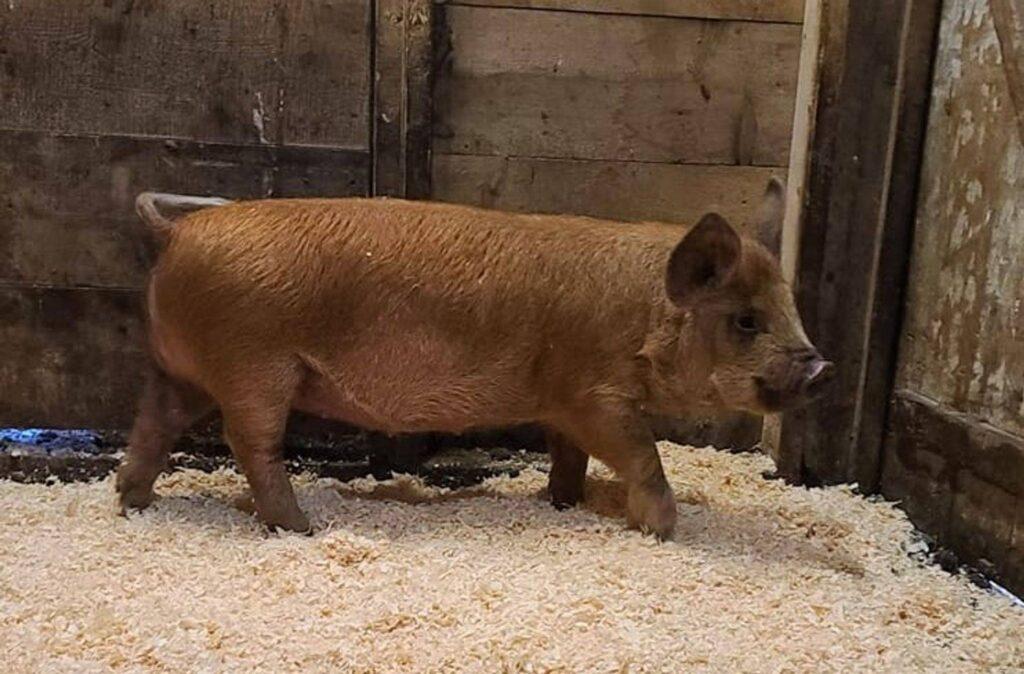
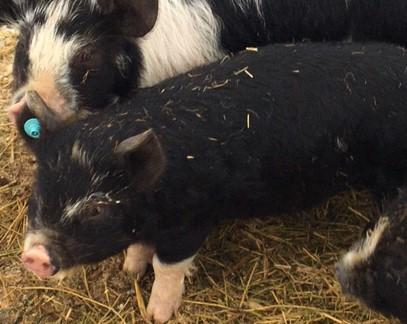

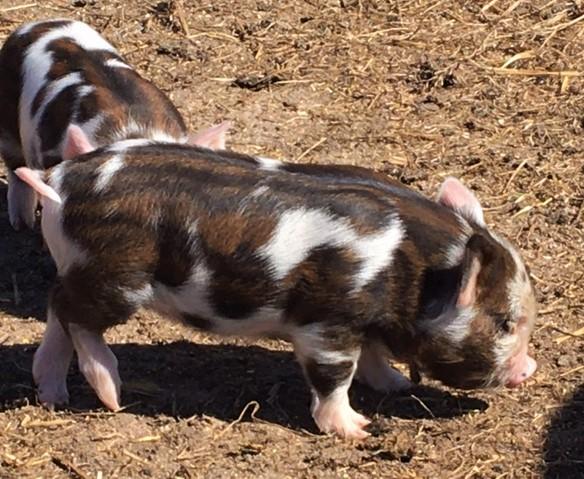

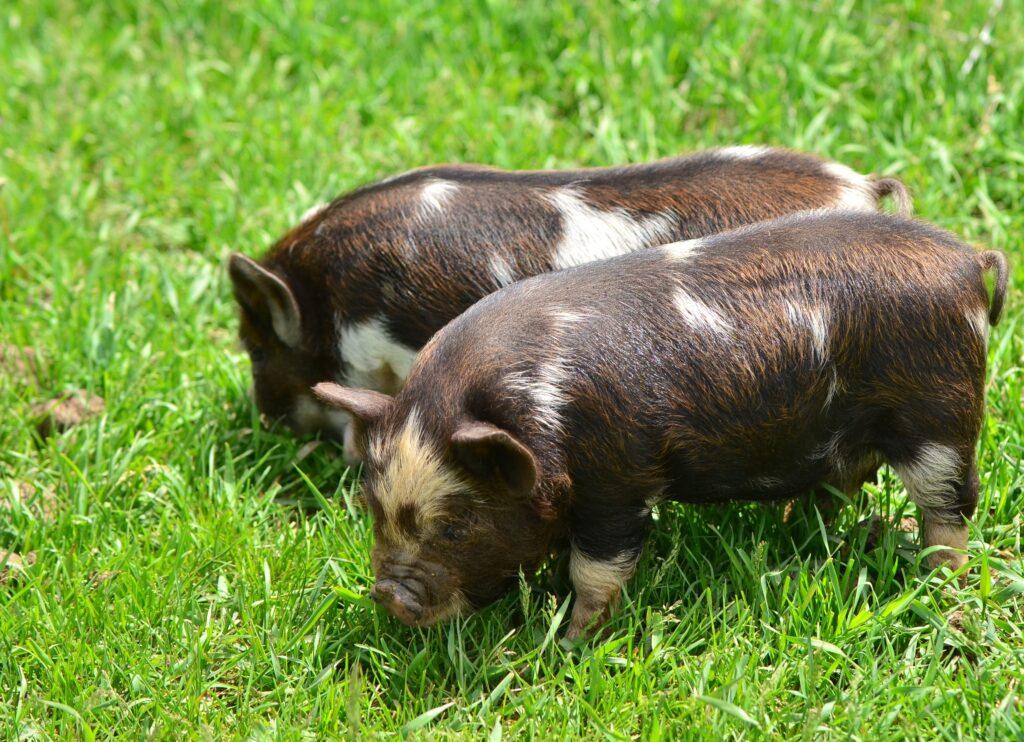
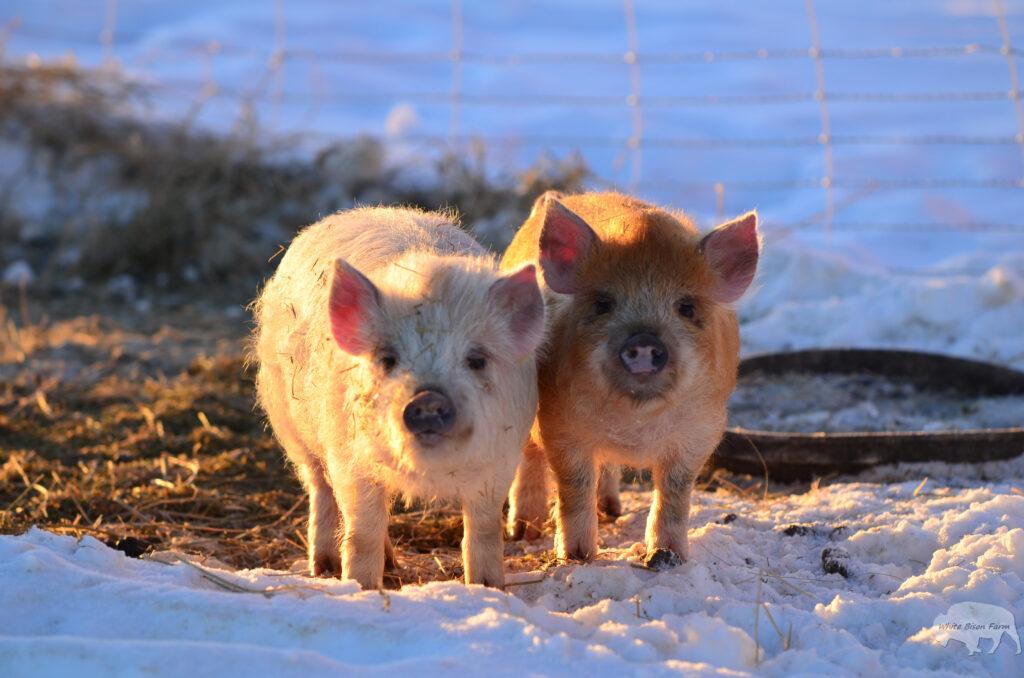
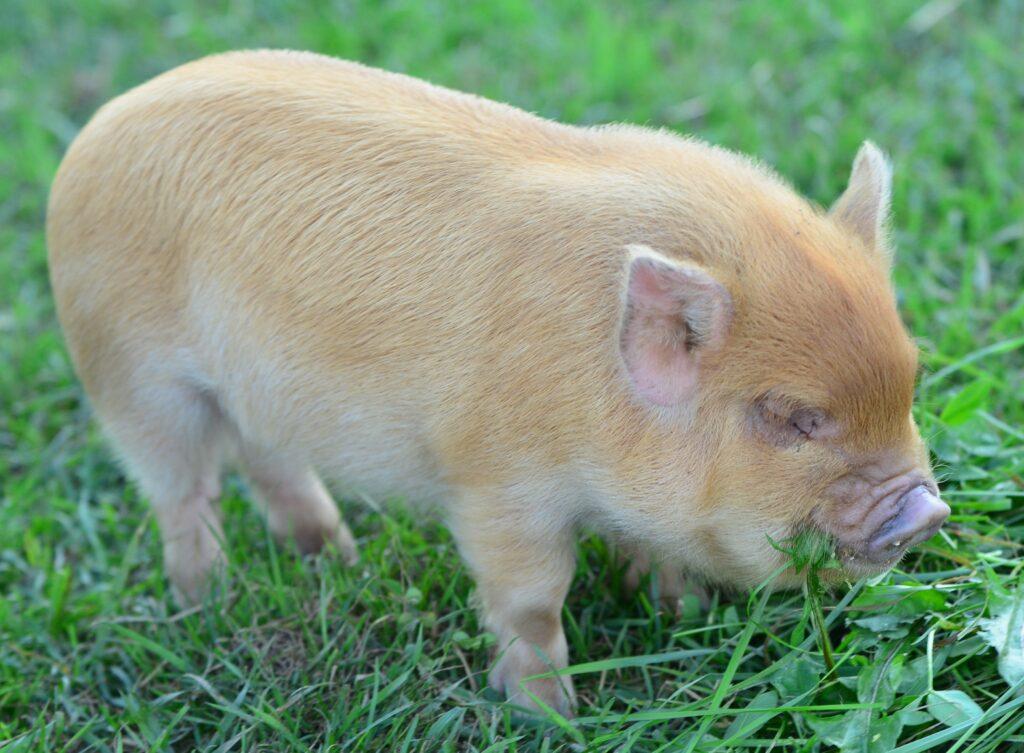
Head:
Medium length snout with an upturn or dish on the end to allow grazing and discourage rooting. The snout should be wide and compliment the overall shape of the head. It should not be tapered, not be long and straight, nor should it be completely snub and dished, all of which disqualify pig from breed selection.
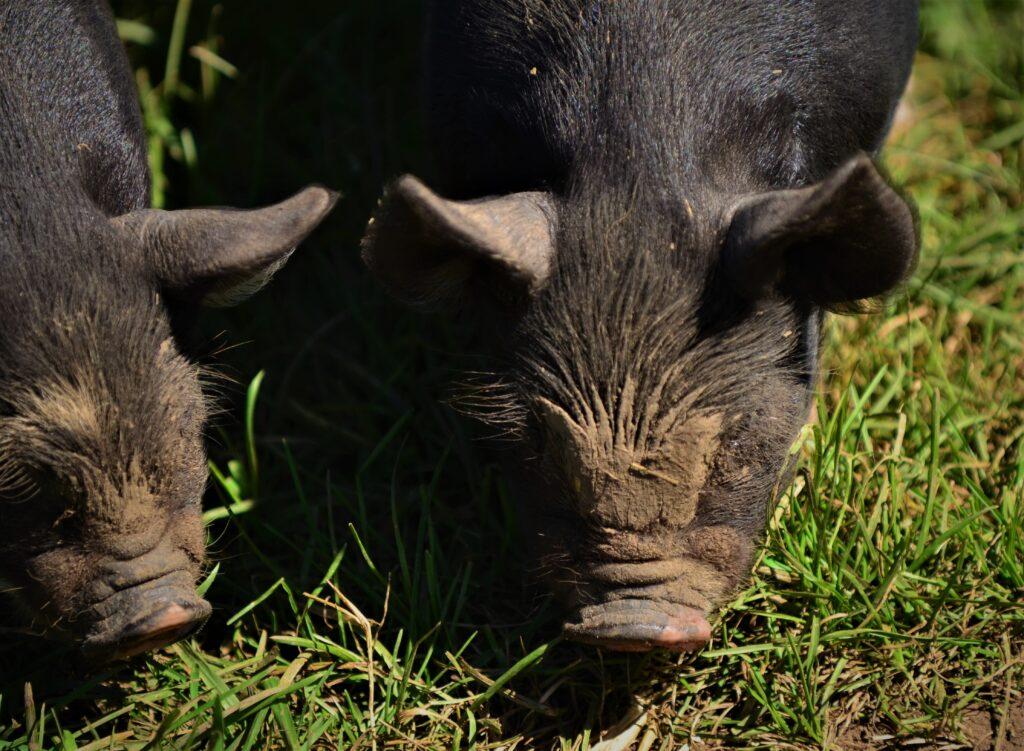
These piglets demonstrate nice wide snouts that run uniform from the eyes to the end of the snout.
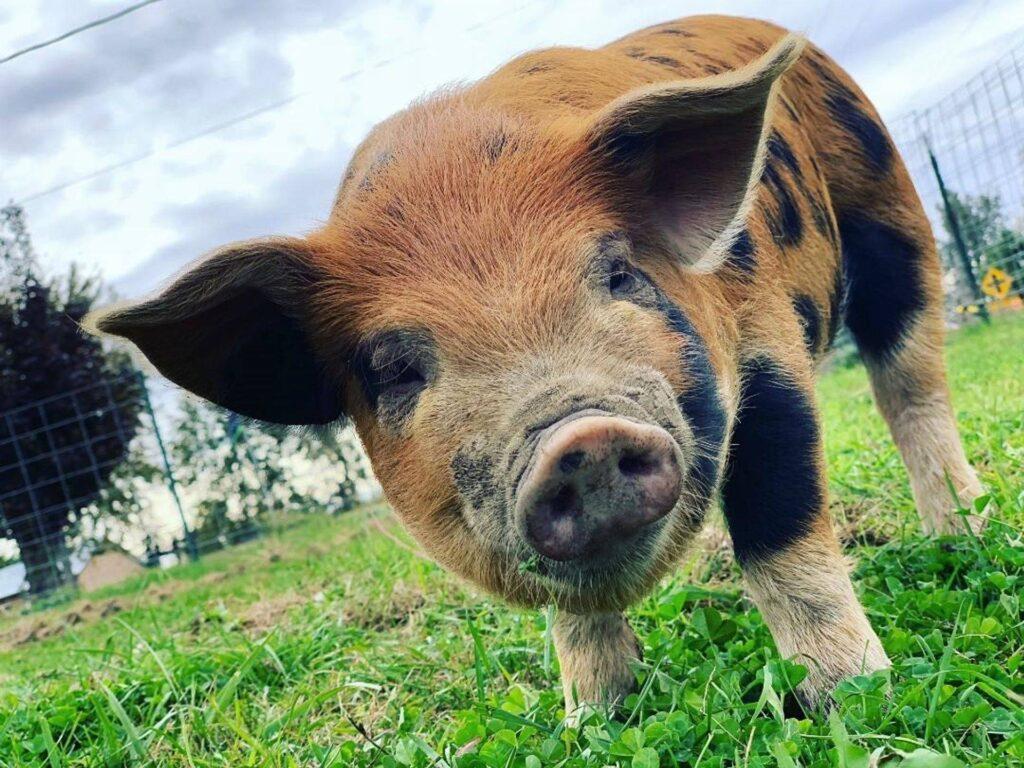
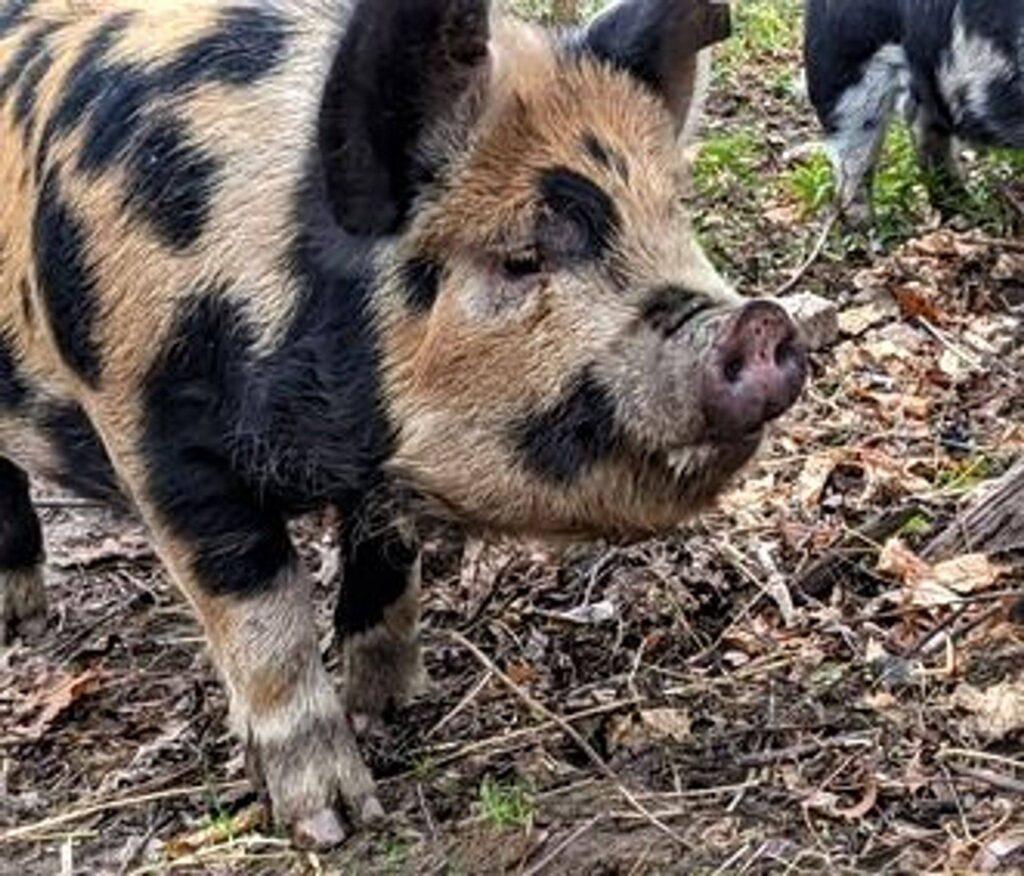
These pigs all have very good length on their snouts. Please note the upturn at the end of the snout that, along with the medium sized snout, gives the Idaho Pasture Pigs the ability to graze so well.
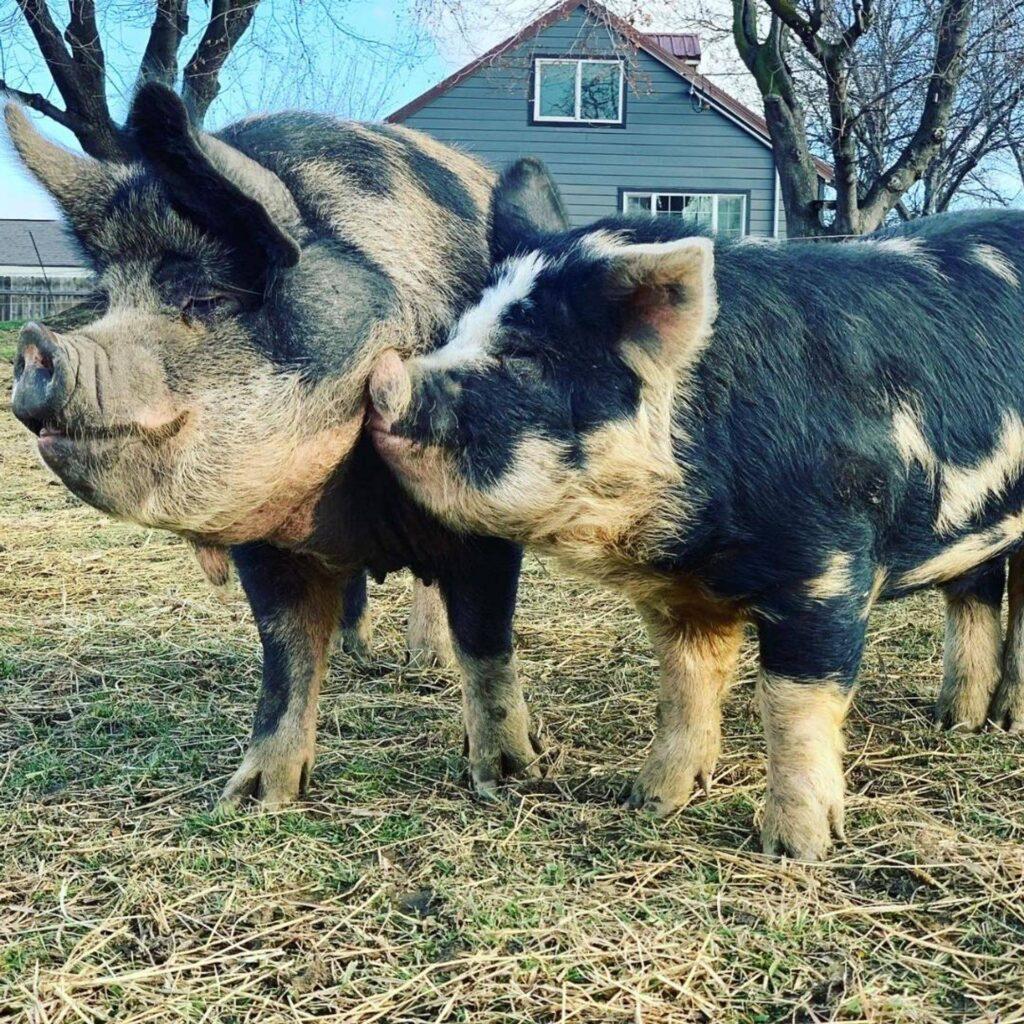
These piglets are of varying ages, but both demonstrate good wrinkles. Wrinkles in the young piglets is a good indicator that the snout will upturn as they age.
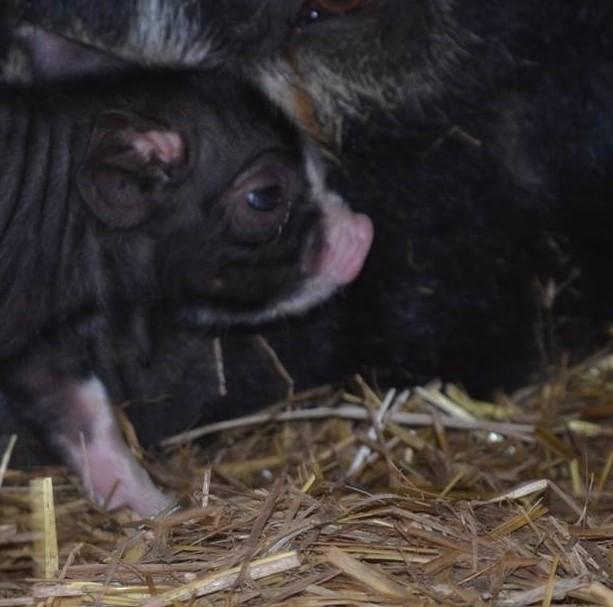
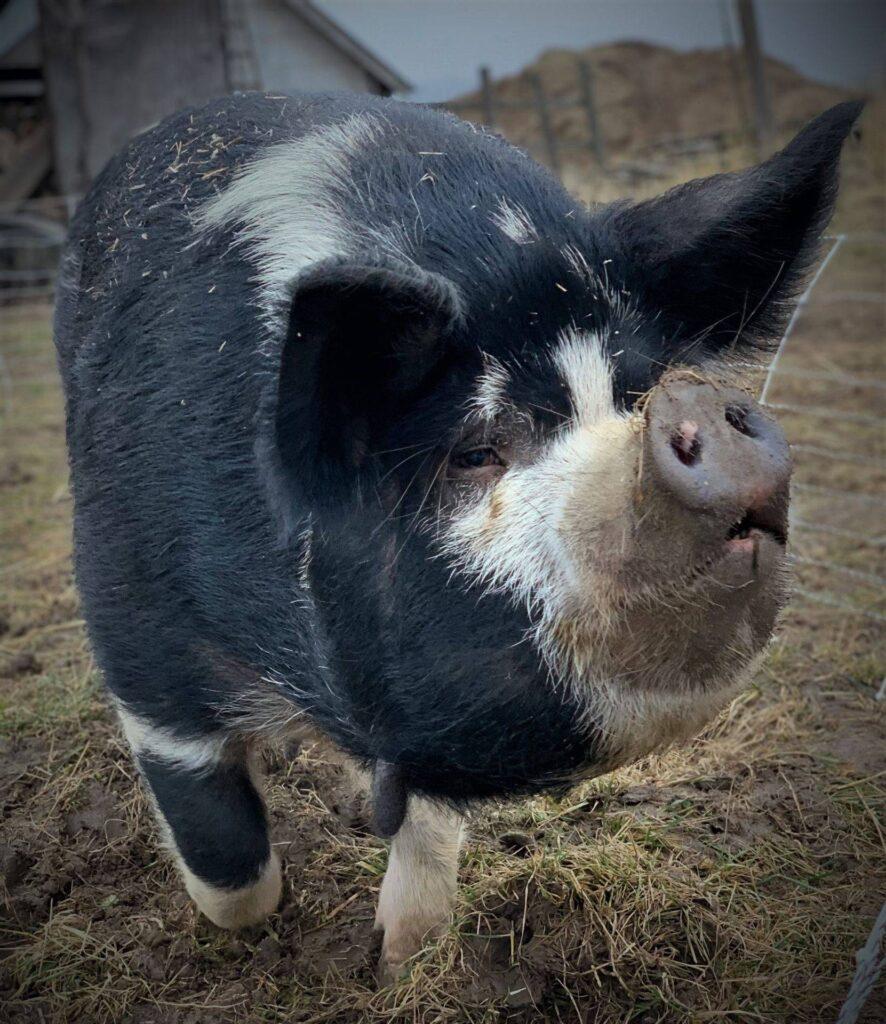
Both of these sows demonstrate excellent snout length and a very nice upturned snout.
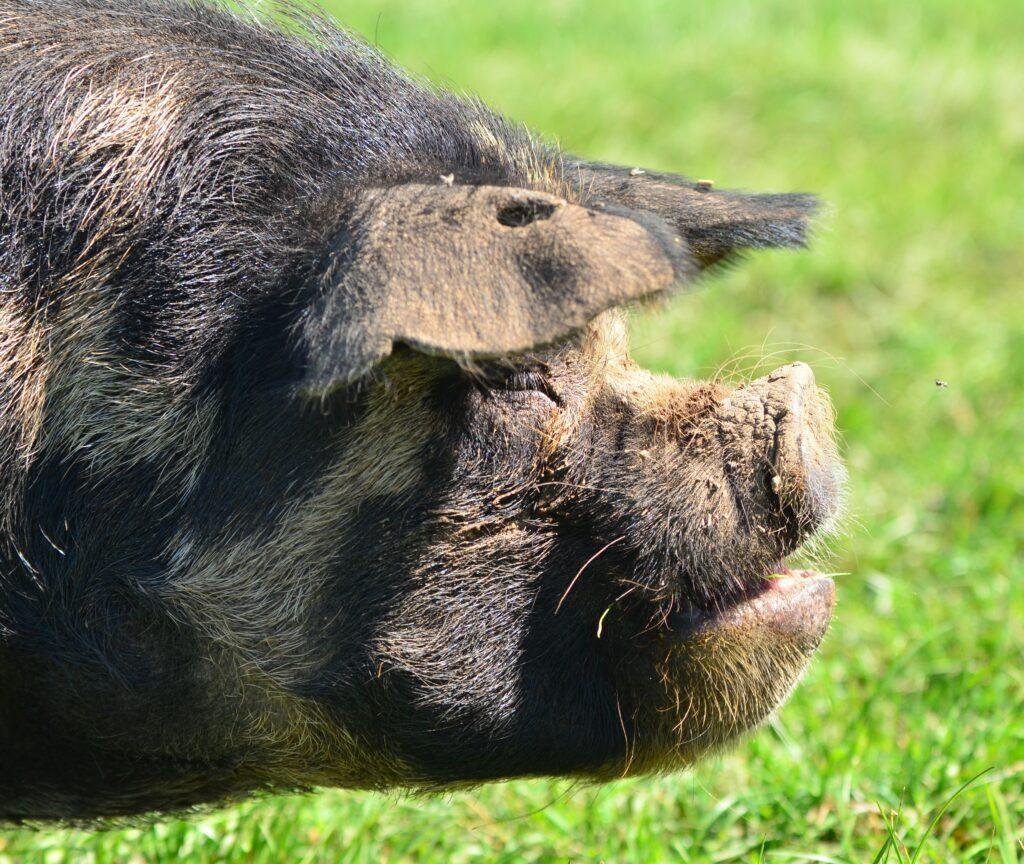
Eyes:
Set well apart and symmetrical. No blindness at birth.
Teeth:
Must be set well in mouth and no over or under bite should be apparent.
Wattles:
Pigs may or may not have wattles. One wattle on either side is also acceptable.
Ears:
Well set apart and can be erect or drooping, but there is a preference to erect ears.
Neck:
Medium length, blending well between the body and head. Not excessively short or long.
Shoulders:
Well developed and noticeable shoulders that are proportional to the rest of the body. There should be a noticeable difference in the sows and the boars with the front shoulders of the boar being more broad and pronounced. Boars will normally develop a shield at about 2 years of age.
Back:
Long and level back is appropriate for breed standard. The back should be proportionate to the animal and the medium sized pig.
Both of these pigs have great length in their backs, well-proportioned front and hind quarters, nicely positioned tail sets and perfect medium sized snouts that upturn very well. Fantastic examples of the the Idaho Pasture Pigs in varying ages!
Ribs:
Deep and well-defined ribs without being overly round is the preferred breed standard. The sides of the pig should be deep and follow the ribs back to the hams. A straight bottom line is preferred. No rounded or barrel shaped sides with the exception of the bred gilts or sows.
Loin:
A broad and long loin area is ideal.
Quarters:
They should be wide coming back from the loin with a good high tail set.
Hams:
Well developed and pronounced hams that are full all the way down to the hocks is ideal.
Legs:
The legs should be straight coming down from the shoulders. They should be strong and keep the pig’s hocks to where it is standing up off of the pasterns with the cleats off of the ground. Some flex of the foot is desired to be able to traverse the ground properly. The legs should be square under the body to provide ease of movement.

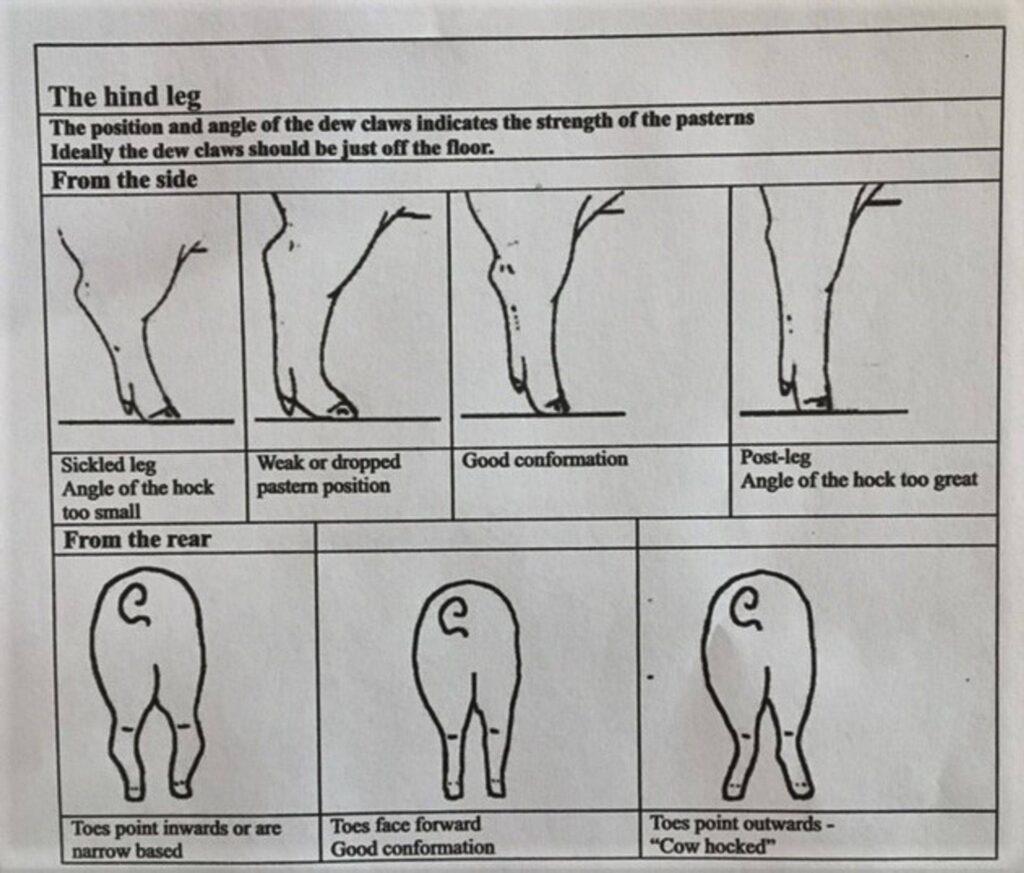
Good examples of the legs coming straight down from both the hind and front quarters in both of these pigs. You can note the shield already forming on this young boar. There is a noticeable difference in the ear carriage of both of these pigs, but both of them are acceptable for the breed standard. Both of these pigs have very nice upturned snouts and the length is slightly different between the two, with both of them meeting breed standard!
(Both of these pictures are compliments of Boots & Bare Roots Farm)
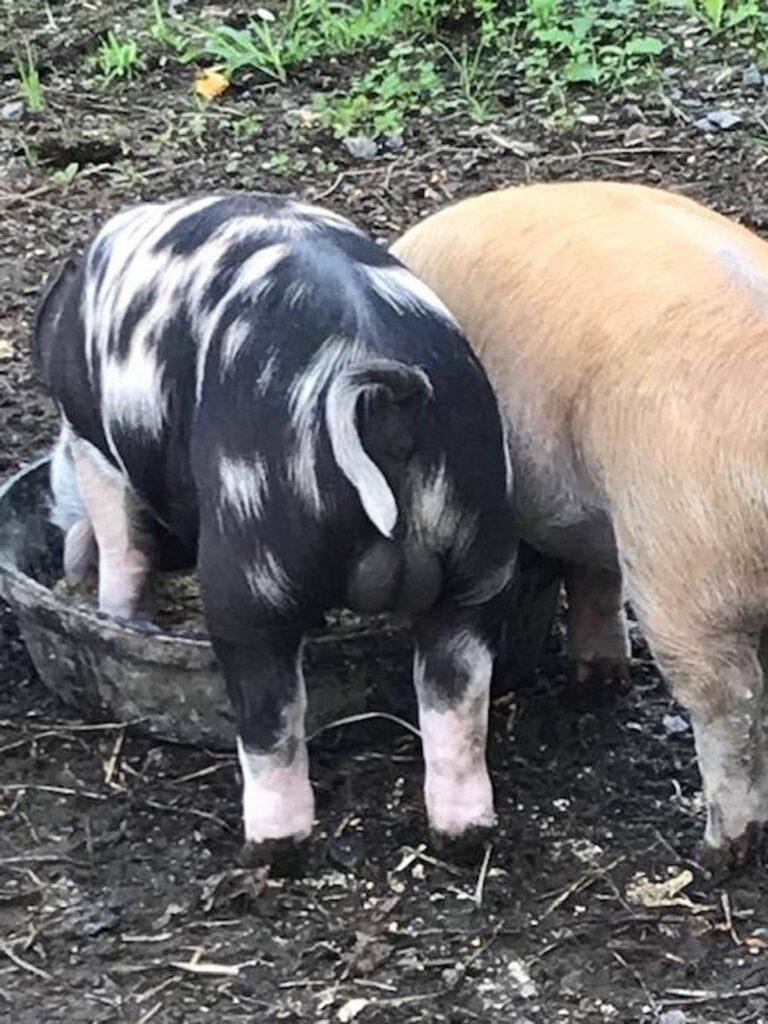
Underline:
Straight from the ribs to the hams. Evenly and well-spaced teats should be present on both boars and gilts on either side of the underline. Preference should be given to 5 or more evenly spaced teats on either side of the midline, but is not a disqualifying factor.
Reproductive Organs:
All breeding stock, while meeting the above standards, must also, without exception, be free from congenital defects (e.g. umbilical and scrotal hernias, Atresia Ani (blind anus), cryptorchid boars, extra cleys, hermaphroditism, rectal and uterine prolapse). Two testicles are visible and/or able to be palpated in young boars. Undescended testicles do not fit breed standard.
Good example of two well positioned testicles on a young boar and an adult boar. You can also note the nicely developed hams, nice high tail set, and great leg conformation in both pigs.
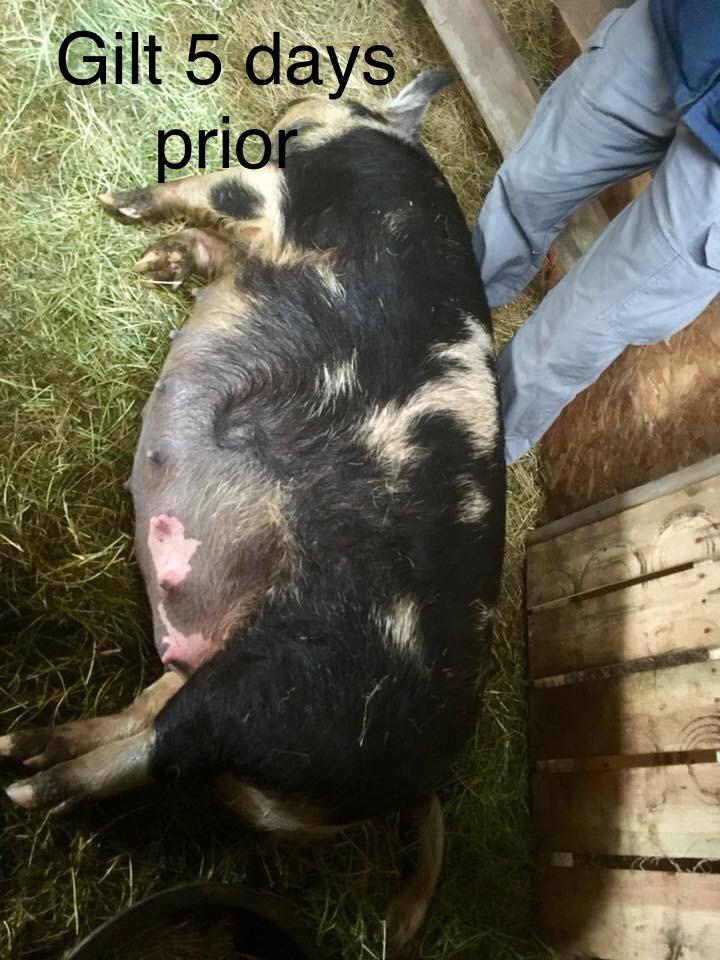
This boar is just a year old and you can note his even and well-defined testicles. He has a nice high tail set. From seeing additional pictures of him, we know he has a good leg structure, but want to point this out for reference. On this picture, because of the way he is standing, his legs appear to be too close together and don’t come straight down from his ham region. If this was true, and not just a fluke because of the way he was standing, he wouldn’t have good leg structure that fit into the breed standard. We know that isn’t the case and this is a beautiful boar with many good traits to pass on to his offspring!
Pictures depicting the teats of gilts just prior to birth! (Compliments of Mouse Creek Farm)
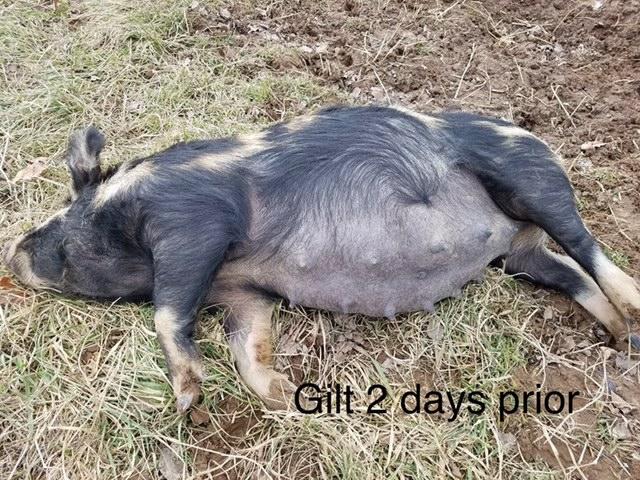
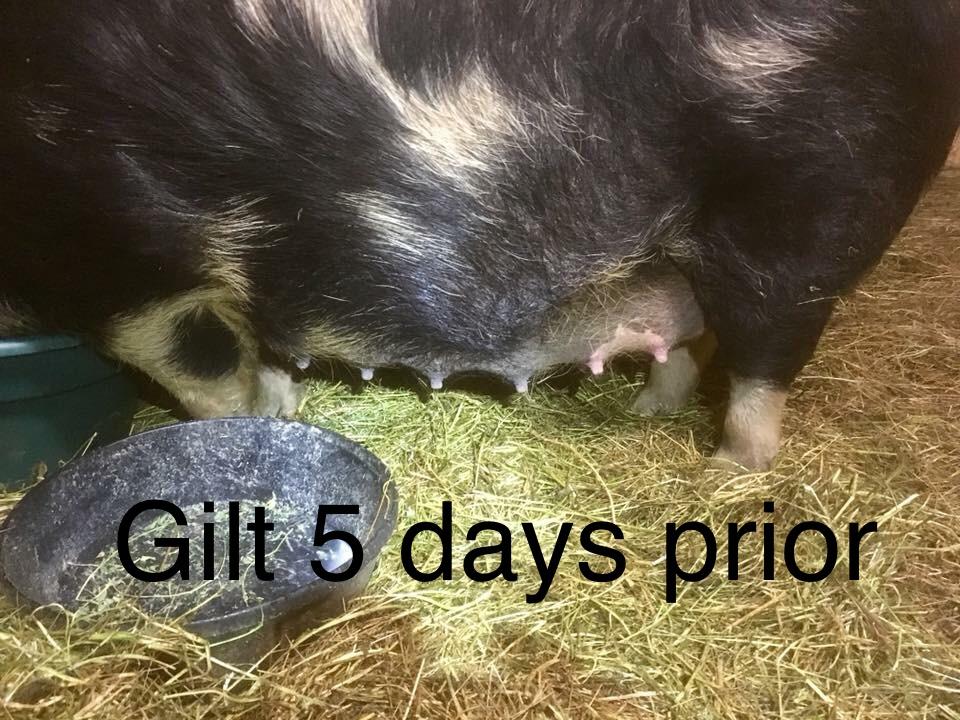
Litter Size:
The average litter size of the Idaho Pasture Pigs is 5- 7 for a gilt (first time mom) and 8 – 10 for a sow.
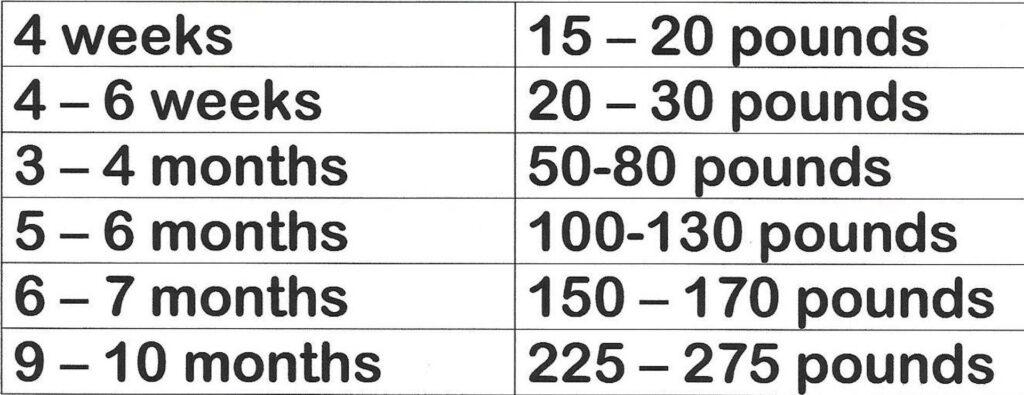
Another Great Litter Size!
Growth Rate:
The following chart depicts the average growth of the Idaho Pasture Pigs.
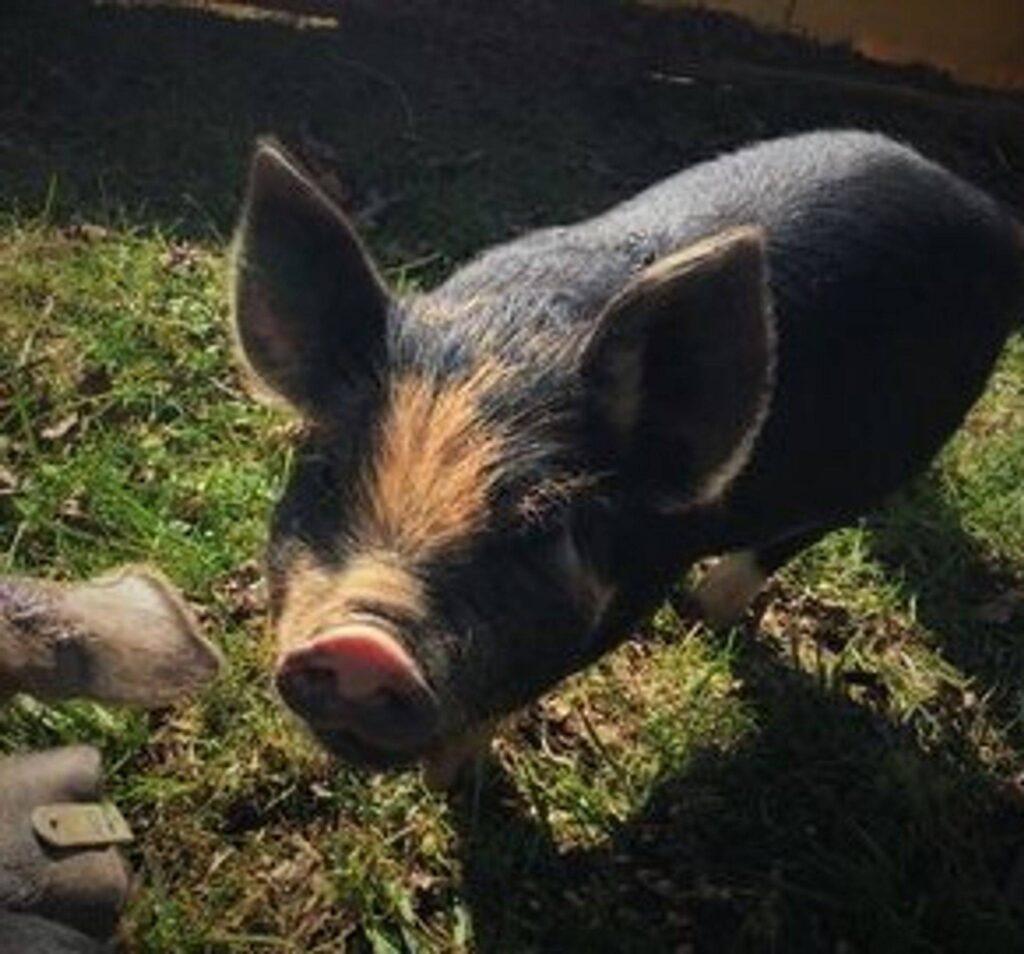
Notes:
Some differences may be noted due to time of the year, location, and feed schedule, but overall growth rate should fit very closely with the above chart.
The Idaho Pasture Pigs are comprised of three different breeds of pigs, so there will be some variety in the shape and conformation of the pigs. The goal is to make sure your breeding quality pigs fall into the stated breed standard. All those that do not make breed standard will still produce amazing quality pork and should be butchered as such.
Each pig will vary slightly in conformation. We have tried to provide some good and bad examples of both body type and head/snout conformation in the pictures below.
This front view allows you to see the overall good width of the nose going from the head to the snout. It is a little difficult to tell in this view, but again this piglet has a nice upturned snout at the end. You can also note the definition of the shoulder and chest as well as the butt muscles. It is more difficult to tell how your piglets will turn out right at birth, but by 4 – 6 weeks old you can really start to tell the overall conformation of their body shape as well as the face and head. If you have a snout that is too narrow and doesn’t compliment the head at 8 weeks old, it is rarely going to change at this point. This isn’t to say it doesn’t happen and each year we personally have one or two that we hold onto for about 3 months to give them time to mature into themselves before we make a determination, but usually by 4 – 6 weeks you will have a good idea. If you aren’t sure, then it isn’t recommended that you sell them as breeding quality! (Compliments of Gattis Farms)
A good way to see the good conformational traits as the pigs progress are noted in the pictures below. We have a few different examples of the same pig in various ages of life.
The ginger piglet shown in the top two pictures is the same gilt. Once as a young piglet and again as a four months old! This pig has beautiful front shoulders, great looking ham region, a nice straight back, and a very nice looking head. She is maturing exactly like we want to see the Idaho Pasture Pigs mature. (Young picture is compliments of Strix Hill Farm) & (Older picture compliments of Ashley)
The gilt shown above is pictured once as piglet at about 2 weeks old and again at about a year old. You can note how the wrinkles on the end of her snout as a young piglet matured into a snout with a beautiful upturn just like we want in the Idaho Pasture Pigs. (Compliments of White Bison Farm)
The boar shown in the 4 previous pictures are all of the same boar in varying stages of his life from a young piglet all the way though to a mature boar. This is a great example of good conformation all the way through the varying stages of his life! (Compliments of Mouse Creek Farm)
The piglet picture in the next few pictures is the same piglet from different angles. The piglet is about 4 weeks old and is a perfect example of a good quality breeding piglet. He has a nice wide snout with a good number of wrinkles on the end. You can note his snout is already upturning in these pictures. To compliment his head is a spectacular body with a long straight back, good hind quarters and front shoulders, a good high tail set, and nice leg placement!
Here are some additional examples of some good quality conformation!
This is a unique sow! Her snout is not the ideal, medium-sized length, but she does meet breed quality. When a piglet is born that has a shorter snout, we recommend keeping that piglet in your pastures and watching how they grow for the first few months. This sow is a mature pig and is equal in size and growth rate to the other pigs her age. She has a gorgeous back line, leg and shoulder stance, and underline. Although her snout is shorter then recommended, her growth rate is perfect therefore she does make breed standard. Many times a shorter snout like this one, will mean that the pigs will carry more of the Kunekune trait and won’t grow as fast as recommended. Keeping this pig in your herd and determining growth rate over a few months will help you determine if the pig will make breed standard.

 Chanel earrings, CC dangle earrings in water drop shape adorned with stones and pearls v39
Chanel earrings, CC dangle earrings in water drop shape adorned with stones and pearls v39 